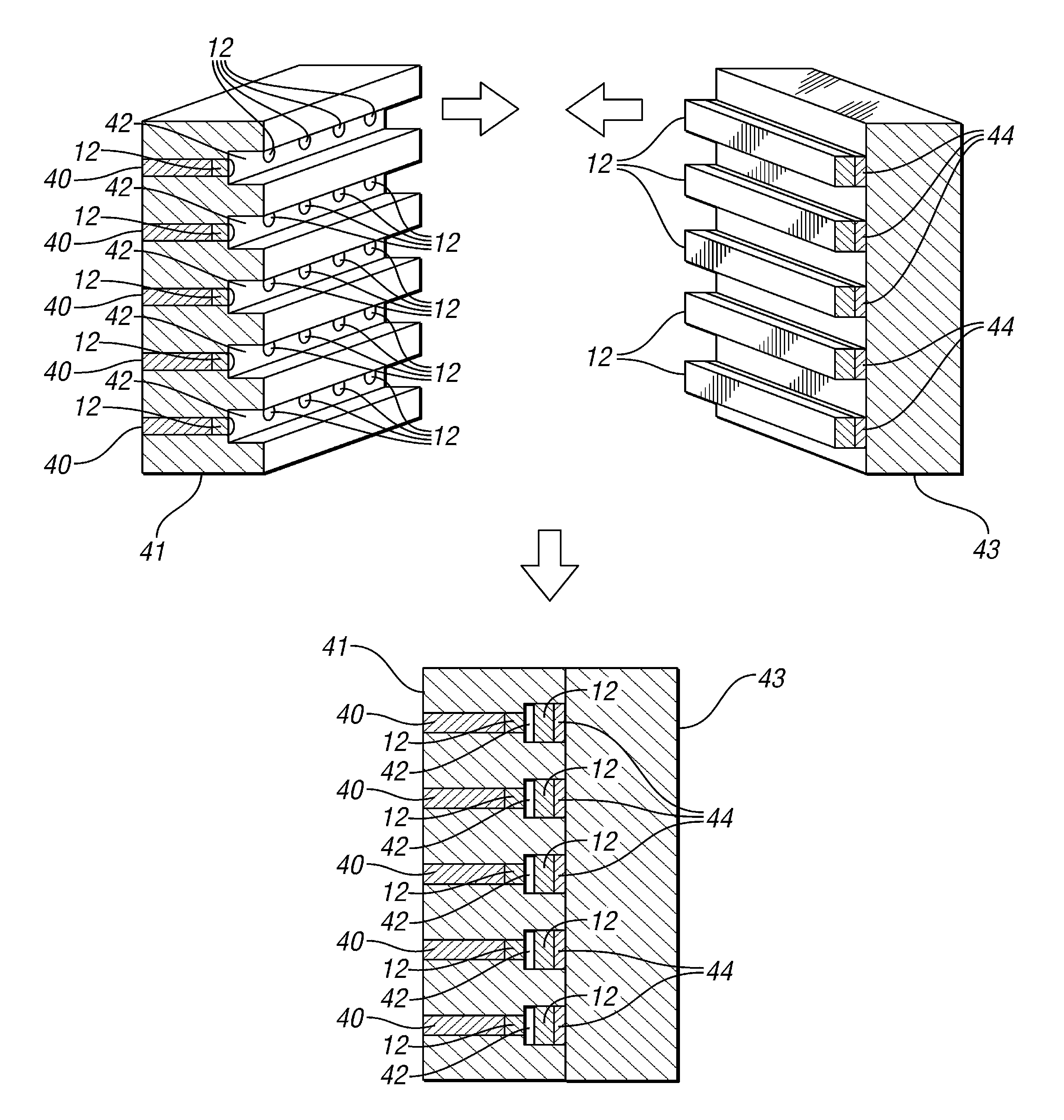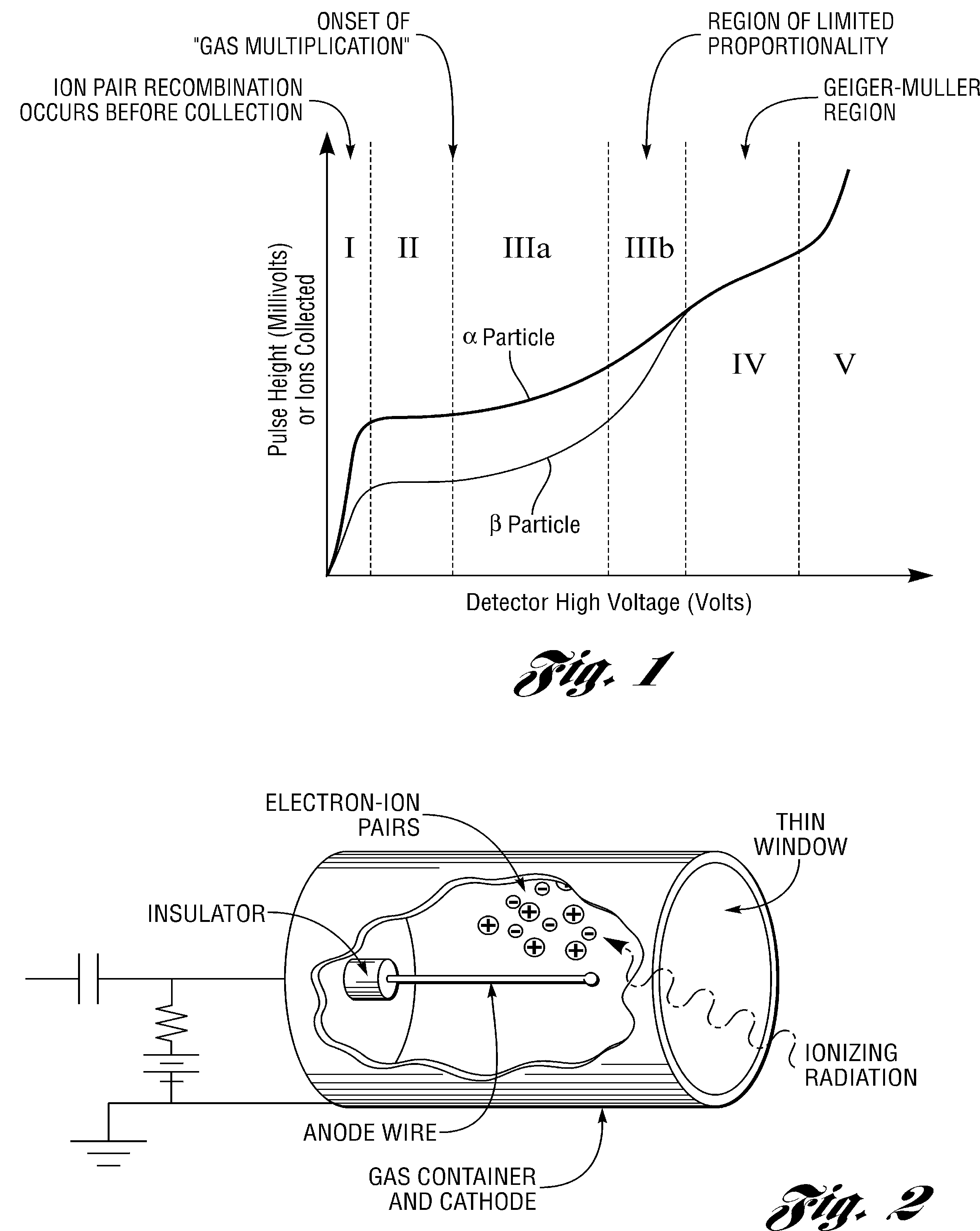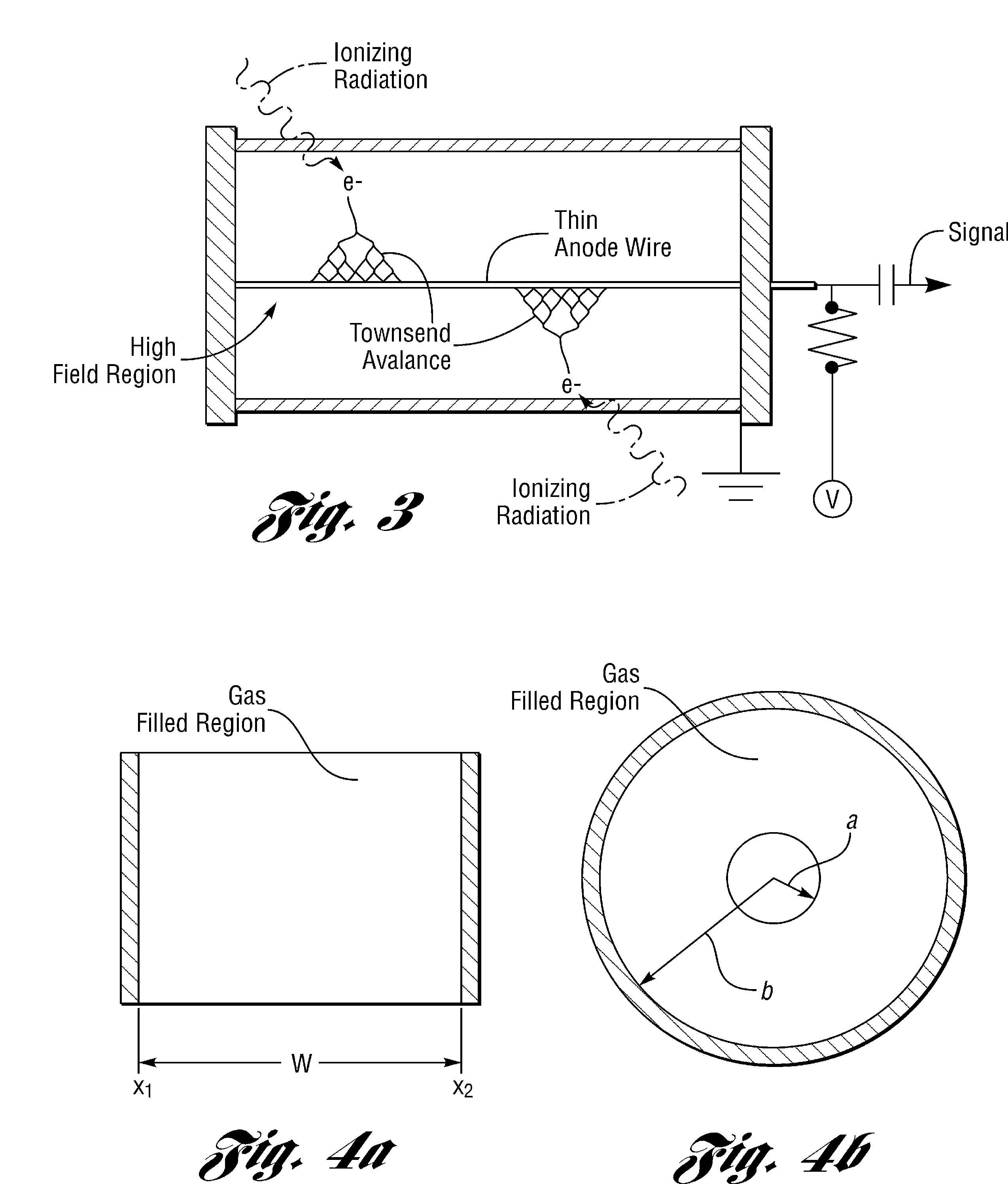Gas-filled neutron detectors having improved detection efficiency
a technology detectors, which is applied in the direction of radiation intensity measurement, instruments, x/gamma/cosmic radiation measurement, etc., can solve the problems of reducing the detection efficiency of gas-filled neutron detectors, and reducing the detection efficiency of neutron reactive gases. , to achieve the effect of increasing the detection efficiency of coated gas-filled neutron detectors
- Summary
- Abstract
- Description
- Claims
- Application Information
AI Technical Summary
Benefits of technology
Problems solved by technology
Method used
Image
Examples
example embodiments
SUMMARY OF EXAMPLE EMBODIMENTS
[0274]The above-mentioned and other problems are solved by applying the principles and teachings associated with the hereinafter described different embodiments of compartmentalized gas-filled neutron detectors. Gas-filled detectors are designed such that one or more objects or structures having large surface areas of low-density, ultra-low-density, or are ultra-thin are incorporated into the gas-filled detectors, where these structures are either composed entirely, or partially, from neutron reactive materials. The low-density and ultra-low-density structures allow the reaction products to travel further than in typical solids, thus the reaction products may escape multiples sides of a neutron absorbing structure concurrently and be measured in the non-reactive gas volume simultaneously. As a result of using materials, which are usually solids, as low-density or ultra-low-density materials, they may become porous or filamentary and have large surface a...
PUM
 Login to View More
Login to View More Abstract
Description
Claims
Application Information
 Login to View More
Login to View More - R&D
- Intellectual Property
- Life Sciences
- Materials
- Tech Scout
- Unparalleled Data Quality
- Higher Quality Content
- 60% Fewer Hallucinations
Browse by: Latest US Patents, China's latest patents, Technical Efficacy Thesaurus, Application Domain, Technology Topic, Popular Technical Reports.
© 2025 PatSnap. All rights reserved.Legal|Privacy policy|Modern Slavery Act Transparency Statement|Sitemap|About US| Contact US: help@patsnap.com



